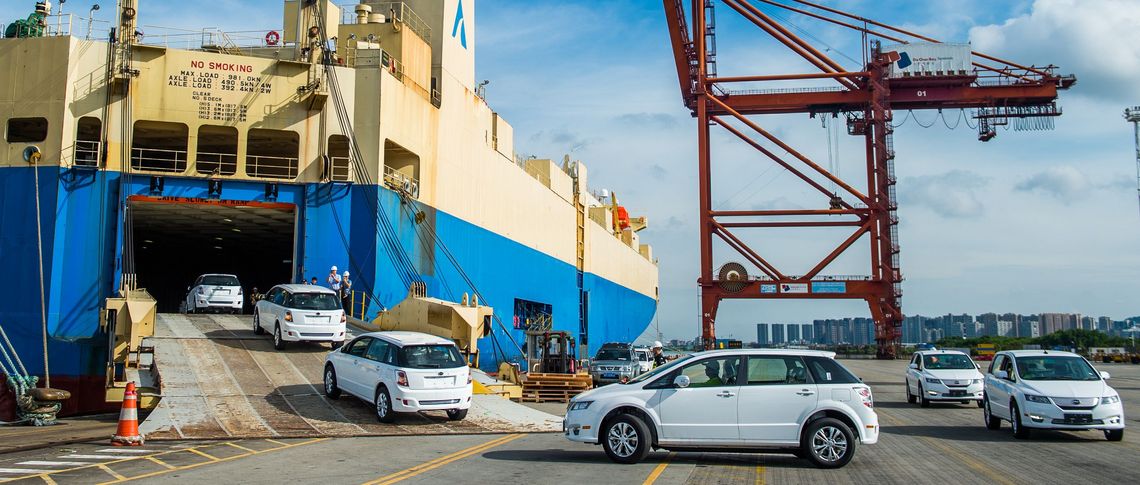As the EU Commission investigates China’s illegal subsidisation of electric cars, it is crucial to understand the ongoing policy debates surrounding ‘de-risking’ in Europe and the US. How do conceptual frameworks influence policy making, the preservation of globalisation, the consolidation of Europe-China relations and the management of economic dependencies? The notion of ‘healthy interdependence’, not only helps implement de-risking ideas but also provides guidance for the development of a better policy mix.
To comprehend the current situation, we must recognise the epochal shift from Globalisation 2.0 to Globalisation 3.0. Globalisation 2.0 operated under the Pax Americana and the rules and norms of the GATT and later the World Trade Organization (WTO). This period was characterised by the paradigm of efficiency, emphasising market openness, fairness, transparency, economic integration, regulatory coordination and social policies to mitigate capital’s worst excesses.
Until the global financial crisis of 2008, Globalisation 2.0 resulted in growing world trade, high levels of global supply chain integration, interdependence of economies, the prevalence of just-in-time production and high levels of specialisation in production, ranging from pharmaceuticals to ICT goods and weapons systems.
Economy and security
Of course, the wisdom of Globalisation 2.0 was questioned before. It is now widely recognised that its complex reality has given rise to discontent and resistance, fuelling populism and resentment because only parts of the world population have benefited disproportionately from globalisation while others were greatly disadvantaged. But since the turn of the decade, there has been a shift in political discourse associated with a global power shift and changing security perceptions; a trend that was accelerated by the Covid-19 pandemic and the war against Ukraine. The emerging perspective – which could be labelled Globalisation 3.0 – has implications for our view of today’s globalised economy.
At the core of Globalisation 3.0 is the nexus of economy and security. This new constellation points to a shift in logic of economic policy away from pure efficiency, which was based on depoliticised economic activity and the logic of economic growth, to a combination of efficiency, resilience and geopolitical risk-management.
What we are witnessing is the re-politicisation of the political economy, where the constant need to balance economic and political objectives is paramount.
As a result, security concerns now drive new policy debates and threat assessments, and many perceive global economic integration and interdependence as a liability or at least a vulnerability that requires attention. In Europe, this view is particularly pronounced, especially when discussing risky dependencies on authoritarian countries. What we are witnessing is the re-politicisation of the political economy, where the constant need to balance economic and political objectives is paramount.
Against this background, the idea of reducing these trade dependencies has gained momentum – starting in Japan and South Korea almost a decade ago and, more recently, taking root in the United States and Europe – given the extensive global dependence on trade with China and products from Chinese factories.
The lexicon of new policy terminology, however, is still under construction. In Europe and the US, the terms de-coupling and de-risking are commonly used to express this sentiment. While de-risking has helped shifting the policy discourse away from radical decoupling ideas, it offers no clear boundaries and contains escalatory tendencies. This creates confusion for decision-makers as to what should be subjected to de-risking measures, how and with which short and long-term goals.
From ‘de-risking’ to ‘healthy interdependence’
For instance, the Biden administration’s ‘small yard, high fence’ appears to be a pragmatically calibrated approach to tackle these issues. Governments elsewhere have cautiously adopted its logic to a limited extent. Yet, as its scope is reaching from AI to biotechnology and cutting-edge semiconductors, it is premised on a very expansive idea of ‘national security’ and gives rise to many ambiguities.
Moreover, the Biden administration mainly uses export controls and does not allow for pragmatic diplomatic negotiations and objectives that are understandable to all parties involved – unless the ultimate aim is to contain China’s economic and technological rise. As a political discourse, ‘small yard, high fence’ has arguably added to the confusion by failing to define what ‘outcome they seek in this competition’, as Ryan Haas argued in Foreign Affairs.
Healthy interdependence recognises that WTO rules and norms, though not obsolete, are becoming less and less relevant and binding under the conditions of Globalisation 3.0.
To move beyond the unproductive development of the current de-risking debate in Europe, the framework of healthy interdependence promises a more effective approach than de-risking because it clarifies the basic objectives in a straightforward way while also going beyond the playbook of Globalisation 2.0.
Healthy interdependence recognises that WTO rules and norms, though not obsolete, are becoming less and less relevant and binding under the conditions of Globalisation 3.0. Rather than emphasising market access restrictions, protectionism and WTO rule-breaking, healthy interdependence focuses on designing sustainable transnational relationships that help to reduce asymmetries in supply chains and build resilience together, particularly when security is a paramount concern. It is important to move beyond the narrow focus on trade imbalances, market access issues or undue subsidies. Instead, the starting point should be clarity about broader strategic implications of economic relationships.
In some cases, it may even be counterproductive to invoke the logic of WTO norms for conflict resolution, as the EU Commission is currently doing. Instead, we should concentrate on how to design healthy interdependent relationships that promote direct coordination among interdependent economies.
What does healthy interdependence entail in practice?
First, healthy interdependence is firmly grounded in the new reality of Globalisation 3.0, which recognises that high global dependency is not only here to stay but is also valuable because it serves important goals and provides for public goods such as prosperity, connectivity and inclusion. Interdependence remains beneficial to the world in terms of the efficient market allocation in the pursuit of wealth, cutting-edge technology and the promotion of human progress.
Second, what is at stake is the management of dependencies rather than the illusion of their elimination. The guiding norm is resilience, not autonomy or even self-sufficiency. Healthy interdependence acknowledges the risks and vulnerabilities associated with economic interdependence but also recognises the benefits of cooperation and coordination among interdependent economies.
Third, healthy dependency recognises the importance of the maintaining market mechanisms. Competition is needed in both Europe and China to drive innovation and technological progress in decarbonisation and efficiency gains. It should not be unduly undermined by the political imperative to reduce dependency and ambiguous de-risking approaches.
On a practical level, healthy interdependence encourages the joint setting of clear objectives. It can ease strained international relations, sustain globalised markets and supply chains, rather than exchanging mutual accusations of unfair trade practices.
Most importantly, healthy interdependence provides a clear narrative about what the EU wants to achieve with de-risking. This kind of narrative is likely more acceptable from a Chinese perspective, given that China has been trying for several years to build resilience by reducing dependencies through the introduction of ‘dual circulation’ and becoming free from US dominated chokepoints. By promoting healthy interdependence, we can create mutual understanding for a more sustainable and resilient economic relationship that benefits both China and the EU, as well as the rest of the world.
Healthy interdependence refers to the terminology of interdependence theory. It does not represent a path to a specific goal but rather a way for countries to maintain resilience in the face of globalisation — it pragmatically operates based on awareness of the fragility of high vulnerabilities caused by asymmetric interdependence and aims at reducing the latter. This approach differs markedly from ‘weaponised interdependence’, which focuses on unilateral coercive actions as recently pointed out in Underground Empire: How America Weaponised the World Economy by Abraham L. Newman and Henry Farrell.
Healthy interdependence instead focuses on negotiated consensus, which implies a common understanding of legitimate core interests and grievances. By contrast, potentially escalating practices of de-risking, if unchecked, would considerably raise costs for all, leading to more economic instability, global inflation and scarcities in various sectors.
On a practical level, healthy interdependence encourages the joint setting of clear objectives. It can ease strained international relations, sustain globalised markets and supply chains, rather than exchanging mutual accusations of unfair trade practices or increasing mistrust due to an almost untranslatable national security logic that tends to encourage escalatory tendencies.
Stable expectations for all market participants
Notably, the concepts of resilience and healthy interdependence are closely related. But their focus and application scenarios differ. Resilience focuses more on a country’s ability to adapt and be resilient at the national level, while healthy interdependence emphasises negotiating cooperation at the international level.
This type of mindset can help policymakers balance openness with security, interdependence with self-reliance, and globalisation with sovereignty. Ultimately, the concept of healthy interdependence offers a more productive framework that recognises the benefits of economic interdependence while concretely managing the risks.
For instance, negotiations maybe necessary to determine the acceptable future level of dependence on specific markets, sectors or individual goods, such as the EU’s anti-subsidy investigation into Chinese electric vehicles. Against this backdrop, some have criticised the EU’s use of protectionism, while others see it as a manifestation of a de-risking policy towards China. The crucial limitation of the EU’s approach, however, lies in its retrograde fixation on Globalisation 2.0 and the associated WTO logic. Instead of openly considering the legitimate concerns about over-dependence on Chinese imports, the EU Commission began investigating problems of market distortions and ‘unfair trade practices’.
Healthy interdependence enables the establishment of resilient and mutually beneficial economic relationships, which are crucial for progressing during the era of Globalisation 3.0.
In this case, following a healthy interdependence approach would imply for the EU to be brutally frank about its concerns. The actual concern is that Chinese car manufacturer could take over a controlling share of the European market. In 2022, 35 per cent of the world’s electric vehicle exports came from China. This represents an increase of 10 percentage points from 2021. In 2022, 16 per cent of electric vehicles sold in Europe were made in China, and their market share is expected to continue growing rapidly.
Healthy interdependence would suggest that the European Union should engage in direct negotiations with the Chinese government to pragmatically discuss potential remedies. For instance, new measures could include mutually agreed-upon temporary limitations of market penetration or local content requirements for Chinese electric cars within the European market, all while considering the expectations and objectives of all market players involved.
This is primarily a political approach to trade policy. As such, healthy interdependence has its own problems and limitations. Most importantly, neither de-risking nor healthy interdependence offer a recipe for improving the competitiveness and innovative capacity of European industry. But this strategy could lead to a negotiated agreement with China and provide stable expectations for all market participants in the sector.
In conclusion, healthy interdependence is a complementary and corrective element to the de-risking discourse, stressing the potentials of alternative policy instruments that deliberately move against the logic of WTO rules. Rather than resorting to accusations of unfair trade practices or increasing mistrust, healthy interdependence offers a pathway for negotiations. It enables the establishment of resilient and mutually beneficial economic relationships, which are crucial for progressing during the era of Globalisation 3.0.







